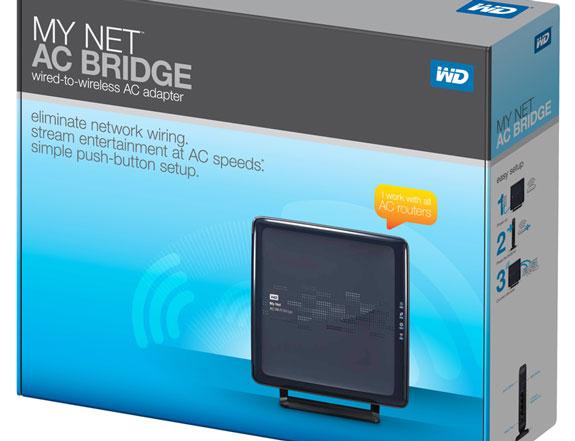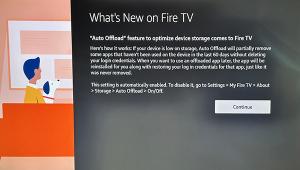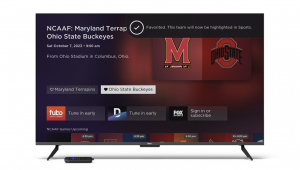Want Faster Streaming? Use an AC Bridge and Router

“AC” refers to the newest home Wi-Fi standard “802.11ac.” Previous versions include 802.11a, 802.11b, 802.11g, and 802.11n. The 802.11ac standard requires technologies to deliver data streams at a faster speed by making more bandwidth available, using dual bands at 2.4GHz and 5GHz, and “beamforming” to focus the data stream to the receiving device—a Smart TV, media player, an AC bridge, and so forth. Wi-Fi 802.11ac routers make it possible to stream a lot of data (up to 1.3 Gbps versus a 450 Mbps cap on 802.11n) handling the demands of high definition video streaming, including 3D video and multiple streams.
Often numbers in the router model number denote its speed capabilities. Western Digital’s AC router, the MyNet AC1300 can stream up to a combined 1.3 Gbps, the Linksys 6500 AC1750 can stream 1.75 Gbps when using the combined 2.4GHz and 5 GHz bands. I’ve explained the Need for Speed in your home network if you want to understand more about streaming speeds within the home.
While “AC” routers have been available for the past year, client devices—media players, Smart TVs and other streaming devices—have been slow to add the required 802.11AC Wi-Fi (receiver). The AC standard is only now being finalized and few manufacturers have wanted to add a new chip to a $99 dollar player or Smart TV, before all of the standard’s features and qualifications were “set in stone.”
It’s still possible to take advantage of an AC router when your home theater streaming devices don’t have an 802.11ac adapter by using an AC bridge wired-to-wireless adapter, which connects to up to four devices using Ethernet cables. It receives the 802.11ac Wi-Fi stream from the router sending the streaming video to your connected home theater devices.
There are three AC bridges that I’ve been testing—the Linksys WUMC710 Wireless-AC Wi-Fi 5GHz Universal Media Connector Bridge with 4-port switch, the My Net AC Bridge Wired-to-Wireless AC adapter, and the Netgear R6300 AC1750 Dual Band Gigabit router used in bridge mode. While the AC products boast speeds up to three times that of 802.11n, I’ve noticed only a negligible increase of speed (3 Mbps faster on average). What I have noticed, however, is that there have been fewer dropouts while streaming video. Also, when streaming from online sites such as Hulu or Netflix that choose resolution/picture quality based on the speed of the receiving device, most videos have been streaming in high definition where they had been streaming in Standard Definition. Vudu kept stopping to display a message that it would be best to stream in Standard definition because the bandwidth was too low. The AC bridges have allowed me to consistently stream in high-def.
One AC bridge is used to connect to my network attached storage (NAS) drives and backup drives that require a direct wired connection to a router. By connecting to the AC bridge using an Ethernet cable, the “direct” connection requirement is satisfied and I can have the NAS drives (where I store my high definition movie downloads) in my office rather than in the same room as the router. I haven’t noticed any drop off in performance compared to when the NAS drives were connected directly to the router.
Both the Linksys and Western Digital AC bridges are extremely easy to set up when used in combination with an AC router that has a WPS pushbutton connect feature. Simply press the WPS button on the bridge, press the button on the router, and it’s connected. The Netgear solution is to use two R6300 routers—one as the router, the second as the bridge. The setup requires going into the router’s menus and submenus to enable the second router to act as a bridge. It’s confusing and if it doesn’t work, you will have to start over and reconfigure both routers.
There are a number of home theater enthusiasts who still swear that the only way to connect for high-definition streaming is to connect Ethernet cables directly to the modem. This may be fine for homes that are wired and have massive switchers to accommodate many streaming devices (a typical router has only four Ethernet ports). But I have found that an AC bridge combined with an AC router is an excellent solution for streaming HD video to your home theater. Plus, you won’t have to worry about losing picture quality when you teenager insists on playing Halo online during your movie time.
- Log in or register to post comments
































































